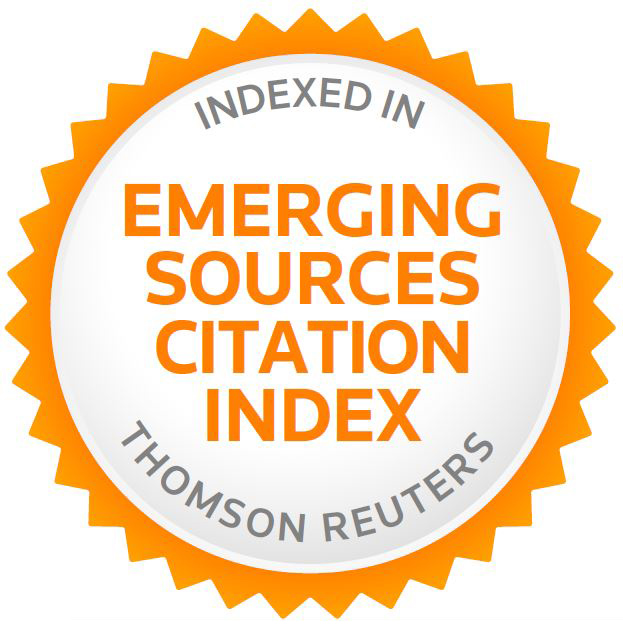Sufrimiento social y migraciones de retorno: una propuesta conceptual
Resumen
El artículo pone de relieve cómo el sufrimiento social, concebido como manifestación de la opresión social y la injusticia incorporada en el individuo, posee atributos que atraviesan las distintas etapas del retorno migratorio, etapas que se encuentran marcadas por procesos transnacionales y multilocales. A tal efecto, el Modelo VIA –compuesto por los ejes analíticos de vulnerabilidad, incertidumbre y asistencia– permite describir, interpretar y analizar el sufrimiento social durante el proceso de retorno desde un análisis multinivel que conecta las percepciones y experiencias de los actores con inequidades estructurales.Referencias
Adorno, T. W. (2001). Minima moralia: reflexiones desde la vida dañada (3.ª ed.). Barcelona: Taurus.
Agadjanian, V., Gorina, E., & Menjívar, C. (2014). Economic Incorporation, Civil Inclusion, and Social Ties: Plans to Return Home Among Central Asian Migrant Women in Moscow, Russia. International Migration Review, (48), 577-603.
Alfaro, Y., & Izaguirre, L. (2010). Migración y perspectivas de retorno. Cochabamba: CESU-UMSS.
Ammasari, S., & Black, R. (2001). Harnessing the Potential of Migration and Return to Promote Development: Applying Concepts to West Africa. IOM Migration Research Series Nº 5. Ginebra: IOM
Anderson, R. E. (2014). Human Suffering and Quality of Life. Springer Briefs in Well-Being and Quality of Life Research. Nueva York: Springer.
Anderson, R. E. (Ed.). (2015). World Suffering and Quality of Life. Nueva York: Springer.
Appadurai, A. (2004). The Capacity to Aspire: Culture and the Terms of Recognition. En V. Rao & M. Walton (Eds.). Culture and Public Action (pp. 59-84). Palo Alto, California: Stanford University Press.
Arowolo, O. (2000). Return Migration and the Problem of Reintegration. International Migration, 38(5), 59-82.
Auyero, J., & Swistun, D. (2009). Flammable: Environmental Suffering in an Argentine Shantytown. Oxford: University of Oxford Press.
Aznar, Y. (junio, 2009). Identidades de retorno: la experiencia migratoria y su integración en el lugar de retorno. En XXVIII Congreso de la Asociación de Estudios Latinoamericanos, Río de Janeiro, Brasil.
Bastia, T. (2011). Should I Stay or Should I Go? Return Migration in Times of Crises. Journal of International Development, 23(4), 583-595.
Bilgili, Ö., & Siegel, M. (2014). Policy Perspectives of Turkey towards Return Migration: From Permissive Indifference to Selective Difference. Migration Letters, 11(2), pp. 218-228.
Black, R., & Gent, S. (2006). Sustainable Return in Post-Conflict Contexts. International Migration, 44(3), 15-38.
Boltanski, L. (1999). Distant Suffering: Morality, Media, and Politics. Cambridge: Cultural Social Studies.
Bourdieu, P. (1999). The Weight of the World: Social Suffering in Contemporary Life. Cambridge: Polity Press.
Bowker, J. W. (1997). Religions, Society, and Suffering. En A. Kleinman, V. Das, & M. Lock (Eds.). Social Suffering (pp. 359-382). Berkeley: University of California Press.
Carling, J., & Erdal, M. B. (2014). Return Migration and Transnationalism: How Are the Two Connected?. International Migration, (52), 2-12.
Carling, J., & Pettersen, S. V. (2014). Return Migration Intentions in the Integration. Transnationalism Matrix. International Migration, 52(6), 13-30.
Cassarino, J. P. (2004). Theorising Return Migration: The Conceptual Approach to Return Migrants Revisited. International Journal on Multicultural Societies, 2, 243-279.
Cassarino, J. P. (2008). Entender los vínculos entre migración de retorno y desarrollo. En G. Pinyol (Coord.). La dimensión exterior de las políticas de inmigración en la Unión Europea (pp. 63-88). Barcelona: Cidob.
Cerase, F. P. (1974). Expectations and Reality: A Case Study of Return Migration from the United States to Southern Italy. International Migration Review 8(2), 245-262.
Cobo, S. (2008). ¿Cómo entender la movilidad ocupacional de los migrantes de retorno? Una propuesta de marco explicativo para el caso mexicano. Estudios Demográficos y Urbanos, 23(1), 159-177.
Constant, A., & Massey D. S. (2003). Self-Selection, Earnings, and Out-Migration: A Longitudinal Study of Immigrants to Germany. Journal of Population Economics, 16(4), 631-653.
Constant, A., & Zimmerman, K. (2007). Circular Migration: Counts of Exits and Years Away from the Host Country. Bonn: IZA. Recuperado de http://ftp.iza.org/dp2999.pdf
Conway, D., & Cohen, J. H. (1978). Consequences of Migration and Remittances for Mexican Transnational Communities. Economic Geography, 74, 26-44.
Curran, S., & Rivero-Fuentes, E. (2003). Engendering Migrant Networks: The Case of Mexican Migration. Demography, 40(2), 289-307.
Das, V. (1995). Critical Events: An Anthropological Perspective on Contemporary India. Delhi y Nueva York: Oxford University Press.
Das, V. (1997). Sufferings, Theodicies, Disciplinary Practices, Appropriations. International Journal of Social Science, 49, 563-557.
DaVanzo, J., & Morrison P. A. (1981). Return and Other Sequences of Migration in the United States. Demography, 18(1), 85-101.
De Bree, J., Davids, T., & De Haas, H. (2010). Post-Return Experiences and Transnational Belonging of Return Migrants: A Dutch-Moroccan Case Study. Global Networks, 10(4), 489-509.
De Haas, H., & Fokkema, T. (2011). The Effects of Integration and Transnational Ties on International Return Migration Intentions. Demographic Research, (25), 755-782.
Dejours, C. (2009). Trabajo y sufrimiento. Madrid: Editorial Modus Laborandi.
Durand, J. (2004). Ensayo teórico sobre la migración de retorno. El principio del rendimiento decreciente. Cuadernos Geográficos, 35(2), 103-116.
Durand, J., & Massey, D. (2003). Clandestinos. Migración México-Estados Unidos en los albores del siglo XXI. Ciudad de México: Miguel Ángel Porrúa.
Faist, T. (1997). The Crucial Meso-Level. En T. Hammar, G. Brochmann, K. Tamas, & T. Faist (Eds.). International Migration, Immobility and Development (pp. 187-217). Oxford: Berg.
Faist, T. (2014). On the Transnational Social Question: How Social Inequalities are Reproduced in Europe. Journal of European Social Policy, 24(3), 207-222.
Faist, T., Bilecen, B., Barglowski, K., & Sienkiewicz, J. J. (2015). Transnational Social Protection: Migrants. Strategies and Patterns of Inequalities. Population, Space and Place, 21(3), 193-202.
Fancher, R. (2003). Health and Suffering in America: The Context and Content of Mental Health Care. New Brunswick, NJ: Transaction Publishers.
Francis, L. E. (2006). Emotions and Health. En J. E. Stets & J. H. Turner (Eds.). Handbook of the Sociology of Emotions (pp. 591-610). Nueva York: Springer.
Glick-Schiller, N., Basch, L., & Szanton, C. (1992). Transnationalism: A New Analytic Framework for Understanding Migration. En N. Glick Schiller, L. Basch, & C. Szanton Blanc (Eds.). Toward a Transnational Perspective on Migration (pp. 1-24). Nueva York: New York Academy of Sciences.
Gmelch, G. (1980). Return Migration. Annual Review of Anthropology, 9, 135-139.
Granovetter, G. (1985). Economic Action and Social Structure: The Problem of Embeddedness. Journal of Sociology, 91(3), 481-510.
Grasmuck, S., & Pessar P. (1991). Between Two Islands: Dominican International Migration. Berkeley: University of California Press.
Gualda, E. (2012). Migración circular en tiempos de crisis: mujeres de Europa del Este y africanas en la agricultura de Huelva. Papers, 97(3), 1-28.
Harris, J., & Todaro, M. (1970). Migration, Unemployment, and Development: A Two-Sector Analysis. American Economic Review 60(1), 126-142.
Haug, S. (2008). Migration Networks and Migration Decision-Making. Journal of Ethnic and Migration Studies, 34(4), 585-605.
Honneth, A. (2010). The Pathologies of Individual Freedom: Hegel's Social Theory. Princeton: Princeton University Press
Hron, M. (2009). Translating Pain: Immigrant Suffering in Literature and Culture. Toronto: University of Toronto Press.
Jáuregui, J. A., & Recaño, J. (2014). Una aproximación a las definiciones, tipologías y marcos teóricos de la migración de retorno. Biblio 3W. Revista Bibliográfica de Geografía y Ciencias Sociales, 19(1084). Recuperado de http://www.ub.edu/geocrit/b3w-1084.htm.
Jeffery, L., & Murison, J. (2011). Guest Editorial: The Temporal, Social, Spatial and Legal Dimensions of Return and Onward Migration. Population, Space and Place, 17(2), 131-139.
Jensen, P., & Pedersen, P. J. (2007). To Stay or Not to Stay? Out-Migration of Immigrants from Denmark. International Migration, 45(5), 87-113.
King, K. M., & Newbold, K. B. (2008). Return Immigration: The Chronic Migration of Canadian Immigrants, 1991, 1996 and 2001. Population, Space and Place, (14), 85-100.
King, R. (2002). Towards a New Map of European Migration. International Journal of Population Geography, 8(2), 89-106. Recuperado de http://doi.org/10.1002/ijpg.246
Kleinman, A. (1997). Everything that Really Matters: Social Suffering, Subjectivity, and the Remaking of Human Experience in a Disordering World. The Harvard Theological Review, 90(3), 315-335.
Kleinman, A. (2010). Caregiving: Its Role in Medicine and Society in America and China. Aging International, 35(2), 96-108.
Kleinman, A., Das, V., & Lock, M. (Eds.). (1997). Social Suffering. Berkeley: University of California Press.
Levitt, P., & Rajaram, N. (2013). Moving Toward Reform? Mobility, Health, and Development in the Context of Neoliberalism. Migration Studies, 1(3), 338-362.
Lobo, I. (2011). Bolivianas en movimiento. Sueños y realidades de mujeres que migran y retornan de España. La Paz: Iscod-ABEU.
Massey, D. S., Arango, J., Hugo, G., Kouaouci, A., Pellegrino, A., & Taylor, J. E. (1998). Worlds in Motion. Understanding International Migration at the End of the Millennium. Oxford: Oxford University Press.
Morawska, E. (2012). Historical-Structural Models of International Migration. En M. Martiniello & J. Rath (Eds.). An Introduction to International Migration Studies: European Perspectives (pp. 57-78). Amsterdam: Amsterdam University Press. Recuperado de http://www.jstor.org/stable/j.ctt6wp6qz.6
Nekby, L. (2006). The Emigration of Immigrants, Return vs. Onward Migration: Evidence from Sweden. Journal of Population Economics, (19), 197-226.
Newland, K. (2009). Circular Migration and Human Development. Documento de investigación N° 2009/42. UNDP-Human Development Reports. Recuperado de: http://hdr.undp.org/en/content/circular-migration-and-human-development
Nieto, C. (mayo, 2011). Motivaciones para la migración de retorno. ¿Qué implicaciones para el desarrollo? En IV Congreso de la Red Internacional de Migración y Desarrollo, Quito, Ecuador.
Parella, S., & Petroff, A. (2016). ¿Otra vez empezando de cero?: los procesos de reintegración de los migrantes bolivianos retornados desde España. Recuperado de http://cermigracions.org/es/blog/%C2%BFotra-vez-empezando-de-cero-los-procesos-de-reintegraci%C3%B3n-de-los-migrantes-bolivianos
Parreñas, R. (2001). Servants of Globalization. Stanford, CA: Stanford University Press.
Parreñas, R. (2005). Children of Global Migration. Stanford, CA: Stanford University Press.
Petroff, A., De la Torre, L., Piqueras, C., & Speroni, T. (julio, 2016). Economic Crisis and Migrant Suffering: A Multilevel Analysis of Return Intentions of Bolivian Migrants in Spain. 3rd ISA Forum of Sociology, Viena, Austria.
Portes, A., Guarnizo, L. E., & Landolt, P. (1999). The Study of Transnationalism: Pitfalls and Promise of an Emergent Research Field. Ethnic and Racial Studies, 22(2), 217-237.
Rath, R., & Kloosterman, J. (1999). Immigrant Entrepreneurs in Advanced Economies: Mixed Embeddedness Further Explored. Journal of Ethnic and Migration Studies, 27(2), 189-201
Ravuri, E. (2014). Return Migration Predictors for Undocumented Mexican Immigrants Living in Dallas. The Social Science Journal, (51), 35-43.
Reagan, P. B., & Olsen R. J. (2000). You can go Home Again: Evidence from Longitudinal Data. Demography, 37(3), 339-350.
Renault, E. (2009). Political Philosophy of Social Suffering. En B. de Bruin & C. Zurn (Eds.). New Waves in Political Philosophy (pp. 158-176). Basingstoke: Palgrave Macmillan.
Renault, E. (2010). A Critical Theory of Social Suffering. Critical Horizons, 11(2), 221-241.
Rivera, L. (octubre, 2009). ¿Quiénes son los retornados? Apuntes sobre el migrante retornado en México contemporáneo. IV Reunión del Grupo de Trabajo Migración, Cultura y Políticas del Consejo Latinoamericano de Ciencias Sociales, Clacso. La construcción social del migrante. Reflexiones desde América Latina y El Caribe, Ciudad de Guatemala, Guatemala.
Rivera, L. (2013). Migración de retorno y experiencias de reinserción en la zona metropolitana de la ciudad de México. Remhu. Revista Interdisciplinar da Mobilidade Humana, 41, 55-76.
Rivera, L. (2015). Narrativas de retorno y movilidad. Entre prácticas de involucramiento y espacialidades múltiples en la ciudad. Estudios Políticos, 47, 243-264.
Sabates-Wheeler, R., & Feldman, R. (2011). Social Protection and Migration: Claiming Social Rights Beyond Borders. Londres: Palgrave Macmillan.
Saunders, C. (2006). Cicely Saunders. Selected Writings 1958-2004. Nueva York: Oxford University Press.
Sayad, A. (2000). O retorno: elemento constitutivo da condição do imigrante. Revista Travessia, 13, 7-12.
Sayad, A. (2004). The Suffering of the Immigrant. Blackwell, Cambridge: Polity Press.
Schramm, C. (2011). Retorno y reinserción de migrantes ecuatorianos. La importancia de las redes sociales transnacionales. Revista Cidob d’Afers Internacionals, 93-94, 241-260.
Stark, O. (1991). The Migration of Labor. Cambridge: Blackwell Publishers.
Triandafyllidou, A. (2011). Circular Migration and Integration A Short Guide for Policy Makers. Florence: Robert Schuman Center for Advanced Studies.
Van Baalen, B., & Müller, T. (2008). Return Intentions of Temporary Migrants: The Case of Germany. Documento de trabajo. Ginebra: University of Geneva.
Van Houte, M., & Davids, T. (2008). Development and Return Migration: From Policy Panacea to Migrant Perspective Sustainability. Third World Quarterly, 29(7), 1411-1429.
Vervotec, S. (2004). Migrant Transnationalism and Modes of Transformation. International Migration Review, 38(3), 970-1001.
Waldorf, B. (1995). Determinants of International Return Migration Intentions. Professional Geographer, 47(2), 125-136.
Wilkinson, I. (2004). The Problem of «Social Suffering»: The Challenge to Social Science. Health Sociology Review, 13(2), 113-121.
Wilkinson, I. (2005). From the Sociology of Risk to a Critical Sociology of Suffering. Scarr Network Conference. Recuperado de http://mastor.cl/blog/wp-content/uploads/2016/10/wilkinson.-sociological-risk-and-suffering.pdf
Wilkinson, I. (2012). Social Suffering and Human Rights. En T. Cushman (Ed.). Handbook of Human Rights (pp. 146-154). Londres: Taylor & Francis.
Wilkinson, I. (2013). The Problem of Suffering as a Driving Force of Rationalization and Social Change. The British Journal of Sociology, 64(1), 123-41.
Wilkinson, I. (2015). Social Suffering and Critical Humanitarianism. En R. E. Anderson (Ed.). World Suffering and Quality of Life (pp. 45-54). Nueva York: Springer.
Wronka, J. (2008). Human Rights and Social Justice. Los Ángeles, CA: Sage Publications.

Esta obra está bajo licencia internacional Creative Commons Reconocimiento 4.0.
Apuntes, revista de Ciencia Sociales publica todos sus artículos y reseñas bajo la licencia Creative Commons Attribution (CC BY 4.0) con el objetivo de fomentar el intercambio académico a nivel mundial. Por ello, la obra en cuestión puede ser distribuida, remezclada, retocada, etc., como el autor y los lectores de la misma lo estimen conveniente. La única condición es que se cite a la revista Apuntes, revista de Ciencias Sociales como entidad editora del texto.








.jpg)



